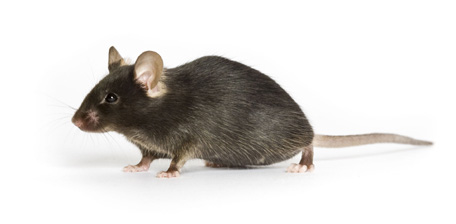Running makes mice smarter
If you exercise, you have probably noticed that you have more energy, are more alert, are a little less moody and remember things better. One might say you're a little smarter. Why? A research group led by Timothy Bussey, Ph.D., Department of Experimental Psychology, Cambridge University, Cambridge, has found strong evidence that physical activity – namely, running – makes mice better learners by stimulating the formation of new blood vessels and brain cells, thereby improving the speed and accuracy with which they can discriminate between two adjacent identical stimuli (Creer et al. 2010).
Although a great deal of evidence indicates that exercise improves cognitive function, the specific mechanisms by which it does so are unknown. Numerous studies in rodents show that running-induced increases in the expression of neurotrophin, vascularization, dendritic spine density and synaptic plasticity of the hippocampus are associated with robust neurogenesis in the dentate gyrus, a subfield of the hippocampus (for review, see van Praag 2008). Recent evidence suggests that this neurogenesis is involved in "pattern separation" – the brain's ability to distinguish between two adjacent identical stimuli.
To determine if neurogenesis in the dentate gyrus positively correlates with improved pattern separation, Bussey and his team analyzed the ability of different groups of male C57BL/6J (000664) mice to learn which of five squares to poke on a computer screen to release a food pellet from a dispenser. Some of the mice were adults (3 months old), and some were old (22 months old); some were housed with running wheels, and some were not. The mice were presented with four challenges: learn which of two far-separated squares to poke; learn which of two intermediately separated squares to poke; learn which of two adjacent squares to poke; and re-learn which of two adjacent squares to poke after their positions are reversed. Bussey and his team found the following:
Adult mice

C57BL/6J mice to distinguish between
adjacent squares, even after the
positions of the squares are reversed.
- Running improves their ability to distinguish between adjacent squares before and after square positions are reversed.
- Running does not increase their ability to discriminate between either two intermediately separated or two far-separated squares, either before or after square positions are reversed.
- Running induces significant dentate gyrus neurogenesis.
- Running induces significant angiogenesis.
- Task performance and neurogenesis are positively correlated.
Old mice
- Running only modestly enhances their ability to discriminate intermediately-separated squares.
- Running does not enhance their ability to discriminate between two adjacent squares.
- Running does not induce neurogenesis in the dentate gyrus.
- Running does not induce angiogenesis in the dentate gyrus.
In summary, Bussey's team found that adult mice that run and have the highest neurogenesis outperform all other mice on the most challenging task — distinguishing between two adjacent squares even after their positions are reversed. Running that does not result in neurogenesis and/or angiogenesis does not improve pattern separation ability. Taken together, these data strongly suggest that exercise enhances the function of a task mediated by a specific hippocampal subfield – the dentate gyrus – and that this enhancement is mediated by exercise-induced neurogenesis.
References
Creer DJ, Romberg C, Saksida LM, van Praag H, Bussey TJ. 2010. Running enhances spatial pattern separation in mice. Proc Natl Acad Sci U S A. 107:2367-72.
van Praag H. 2008. Neurogenesis and exercise: past and future directions. Neuromol Med 10:128-140.